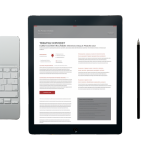Gone are the days when revenue managers sat in a dark office crunching numbers behind a computer screen. Today, a successful hotel revenue strategy requires collaboration from multiple stakeholders, and revenue managers must be communicative and transparent with other departments at the hotel to get the best results.

Whether you’re just beginning to implement a revenue strategy or you’ve been honing your pricing strategy for years, refreshing your revenue meetings can do wonders when it comes to implementing a growth strategy. If you’re going over the same data week after week, meetings can get stale and monotonous. So, at your next meeting, look around — if you find more attendees checking email or staring at their phones, you know it’s time to freshen up the agenda.
Here are five tips to making sure your revenue strategy meeting is beneficial to everyone involved and will deliver the best results.
1. Who should be there?
It’s important that the hotel’s director of revenue management or revenue leader chair this meeting. Also, each attendee should have a specific role or should be assigned a specific task for the meeting.
- General manager (GM): Expect your hotel GM to provide the high-level strategic changes or direction he or she is looking for from the strategy team. Don’t expect him or her to prepare anything for the meeting.
- Director of sales (DOS)/Director of sales and marketing (DOSM): The DOS or DOSM should bring group forecast data to the meeting and talk through the group rooms controls in place, plus highlight any upcoming events or large group check-ins.
- Front office: Data or analysis from the front office should help you forecast upsell revenue. This person can also touch on the operations forecast and recent no-show trends.
- Senior sales leader: This representative should be prepared to discuss upcoming group cutoffs and a high-level view of which groups are picking up faster or slower than anticipated.
2. How often should we meet?
Once a week is just frequent enough to keep up on the trends yet give directors enough time to analyze the trends for anomalies and prepare reports and recommendations for the near future. Because most revenue leaders need to produce figures by the weekend, Wednesday or Thursday is often times the best day to hold the meeting.
3. What reports should I bring to the meeting?
It’s important to keep these meetings at a very high strategic level. You’ll most likely have only 60 minutes together, so refrain some getting into the day-to-day weeds. There’s no need to go through your 90-day forecast and look at pace and pickup for each 90 days.
The most important data to discuss:
- On the books
- Pace by room type
- Pace by special events
- Arrivals and departures
- 30-, 60- and 90-day forecasts
- Competitor data
- Online reputation scores.
Those with an automated revenue strategy will have all of these reports and information at their fingertips rather than showing up with a binder and folders full of information.
4. What are the critical talking points?
Start with the big picture, such as a report from the GM on recent trends. Then highlight fiscal-year data and key variances from the budget.
Then you can get into much more detail, such as:
- Pace and pick-up for the current and following months.
- Demand by segment, starting with transient vs group.
- Key changes over past seven days.
- Identifying critical need dates.
- Group ceilings — how many rooms is the sales team allotted?
5. What makes a meeting successful?
Successful revenue strategy meetings have a logical flow, as much of the data from other departments, such a group data from the sales team, will be integral to determining future strategy and pricing recommendations.
Now that you’ve gone over an hour’s worth of key data, once you return to your office, it’s time to push these recommended rates to the PMS, CRS and channel manager. Then, take some time to prepare notes from the meeting and distribute to the team. When everyone’s on the same page, the biggest revenue results will roll in.








